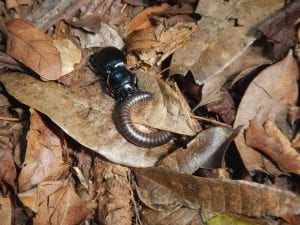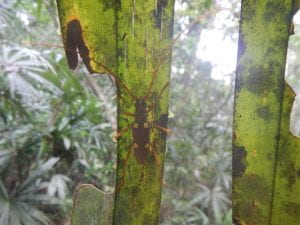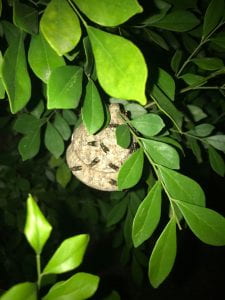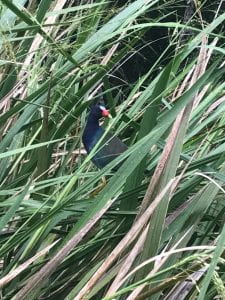May 19, 2019
Today was incredibly busy. We spent the entire morning and afternoon collecting and analyzing data for two different experiments. Lunch included some delicious banana smoothies with the perfect consistency (hopefully I can replicate it when I’m back home).
In the evening, we hiked up to the bird tower. The bird tower doesn’t really have anything to do with spotting birds. This is because the bird tower is so high up, you have a view of the vastness of the Chiquibul Forest, and any bird in view would likely be too tiny to make out.
Beetle highlights from today included a rove beetle (unknown species) and the elusive headlight elater (Pyrophorus noctilucus). In my research before this trip I learned that rove beetles lift their rear ends up in an exaggerated scorpion-like manner when threatened. Sure enough, when I brushed against a rove beetle’s leaf today, the beetle lifted its rear end high into the air so that its tail was literally perpendicular to the rest of its body (pretty wild).
After our night hike back from the bird tower, Kaela described seeing a beetle with two bright lights on its body. Even though I didn’t see it myself, this was pretty exciting to hear because this was undoubtedly a headlight elater. These beetles have two bioluminescent spots on their thorax that are meant to startle predators. Some say the headlight elater is bright enough to read by.








